Publications: Books
Key book publications by the Thinking Together team
As well as these key books you may also find useful Journals and Chapters published by the Thinking Together team. You can also find foreign language versions of some of these book in International publications.

Mercer, N. (2019) Language and the Joint Creation of Knowledge: the selected works of Neil Mercer. Abingdon: Routledge.
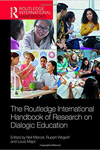
Mercer, N., Wegerif, R. & Major, L. (eds) (2019). The Routledge International Handbook of Research on Dialogic Education. Abingdon: Routledge.
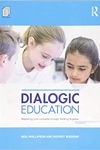 Phillipson, N. and Wegerif, R. (2017). Dialogic Education: Mastering Core Concepts through thinking together. Abingdon: Routledge
Phillipson, N. and Wegerif, R. (2017). Dialogic Education: Mastering Core Concepts through thinking together. Abingdon: Routledge
Builds upon practical classroom research to offer a method of teaching that applies the power of dialogue to achieving conceptual mastery across the curriculum. Easy-to-follow template lesson plans are provided.
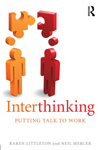 Littleton, K. and Mercer, N. (2013). Interthinking: Putting talk to work. Abingdon: Routledge.
Littleton, K. and Mercer, N. (2013). Interthinking: Putting talk to work. Abingdon: Routledge.
Through using spoken language, people are able not merely to interact, but to interthink. Written in an accessible and jargon-free style, this book explains how people can think productively and creatively together, across a range of settings.
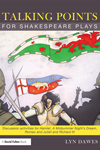 Dawes, L. (2013). Talking Points for Shakespeare Plays. Abingdon: Routledge.
Dawes, L. (2013). Talking Points for Shakespeare Plays. Abingdon: Routledge.
This book aims to help young people develop a real interest in Shakespeare through meaningful classroom discussion. The book provides scene by scene 'Talking Points' and other discussion activities for: Hamlet, A Midsummer Night's Dream, Romeo and Juliet and Richard III.
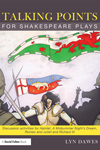 Dawes, L. and Warwick, P. (2012). Talking Points: Discussion activities in the primary classroom. Abingdon: Routledge.
Dawes, L. and Warwick, P. (2012). Talking Points: Discussion activities in the primary classroom. Abingdon: Routledge.
Nominated for a UK Literacy Association book prize, this book explains how to help children learn the skills of group discussion. It provides practical resources to enable primary teachers to stimulate and support extended talk about curriculum topics.
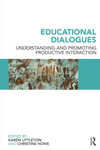 Littleton, K. and Howe, C. (2010). Educational Dialogues: Understanding and promoting productive interaction. Abingdon: Routledge.
Littleton, K. and Howe, C. (2010). Educational Dialogues: Understanding and promoting productive interaction. Abingdon: Routledge.
This book provides a clear, accessible and well-illustrated case for the importance of dialogue and its significance in learning and teaching. It brings together contributions from a wide range of internationally renowned researchers.
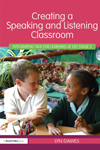 Dawes, L. (2010) Creating a Speaking and Listening Classroom. London: Routledge.
Dawes, L. (2010) Creating a Speaking and Listening Classroom. London: Routledge.
This book provides teachers with strategies and resources to enable whole classes to work together through the medium of talk. The strategies for teaching speaking and listening enable children to use one another’s minds as a rich resource. Some resources associated with this book can be found in the Resources section of this website.
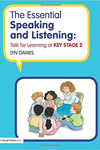 Dawes, L. (2008) The Essential Speaking and Listening: Talk for learning at KS2. London: Routledge.
Dawes, L. (2008) The Essential Speaking and Listening: Talk for learning at KS2. London: Routledge.
This book provides teachers of children aged 8-11 with resources for developing children's understanding of talk and how to use it for learning
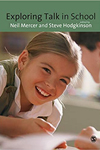 Mercer, N. and Hodgkinson, S. (2008) (Eds) Exploring Talk in School. London: Sage.
Mercer, N. and Hodgkinson, S. (2008) (Eds) Exploring Talk in School. London: Sage.
Inspired by the pioneering work of Douglas Barnes, in this book leading international researchers and teachers consider ways of improving classroom talk.
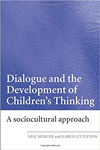 Mercer, N. and Littleton, K. (2007) Dialogue and the Development of Children's Thinking. London: Routledge.
Mercer, N. and Littleton, K. (2007) Dialogue and the Development of Children's Thinking. London: Routledge.
This book collects together all the research underpinning Thinking Together, and uses it to set out a sociocultural account of how classroom dialogue can contribute to learning and cognitive development.
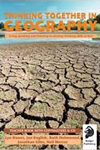 Dawes, L. , English, J., Holmwood, R. Giles, G. and Mercer, N. (2005) Thinking Together in Geography. Stevenage: Badger Publishing.
Dawes, L. , English, J., Holmwood, R. Giles, G. and Mercer, N. (2005) Thinking Together in Geography. Stevenage: Badger Publishing.
This is a book for teachers of practical classroom activities for developing the talk, reasoning and curriculum learning of children aged 11-14.
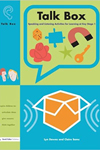 Dawes, L,. and Sams, C. (2004) Talkbox: speaking and listening activities for learning at Key Stage 1 (ages 6-8). London: David Fulton.
Dawes, L,. and Sams, C. (2004) Talkbox: speaking and listening activities for learning at Key Stage 1 (ages 6-8). London: David Fulton.
This is a book for teachers of practical classroom activities for developing the talk, reasoning and curriculum learning of children aged 6-8.
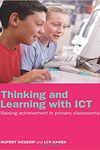
Wegerif, R., Dawes, L. (2004) Thinking and Learning with ICT: Raising Achievement in Primary Classrooms. London: Routledge
This book explains how computer-based activities can be used effectively to help develop children's talk and reasoning.
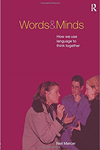 Mercer, N. (2000) Words and Minds: How We Use Language to Think Together. London: Routledge.
Mercer, N. (2000) Words and Minds: How We Use Language to Think Together. London: Routledge.
This book explains how people use language as a tool for thinking, collectively and alone, and discusses the significance of this for education.
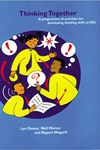 Dawes, L., Mercer, N. and Wegerif, R. (2000) Thinking together: a programme of activities for developing speaking, listening and thinking skills for children aged 8-11. Birmingham: Imaginative Minds Ltd.
Dawes, L., Mercer, N. and Wegerif, R. (2000) Thinking together: a programme of activities for developing speaking, listening and thinking skills for children aged 8-11. Birmingham: Imaginative Minds Ltd.
This is a book for teachers of practical classroom activities for developing the talk, reasoning and curriculum learning of children aged 8-11.
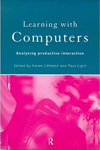 Littleton, K. and Light, P. (Eds.) (1999) Learning with Computers: Analysing productive interaction. London: Routledge.
Littleton, K. and Light, P. (Eds.) (1999) Learning with Computers: Analysing productive interaction. London: Routledge.
This book describes and evaluates research on the use of computers for supporting children's joint activity.
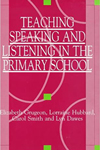 Gudgeon, E., Hubbard L., Smith C., and Dawes L. (1998). Teaching Speaking and Listening in the Primary School. London: David Fulton.
Gudgeon, E., Hubbard L., Smith C., and Dawes L. (1998). Teaching Speaking and Listening in the Primary School. London: David Fulton.
This book for teachers explains how to make the most of talk in classrooms - and includes a chapter on the Thinking Together approach.
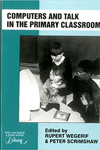 Wegerif, R. and Scrimshaw, P. (Eds.) (1997) Computers and Talk in the Primary Classroom. Clevedon: Multilingual Matters.
Wegerif, R. and Scrimshaw, P. (Eds.) (1997) Computers and Talk in the Primary Classroom. Clevedon: Multilingual Matters.
This book reports the classroom research which first led to the development of Thinking Together.
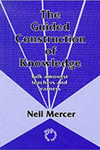 Mercer, N. (1995) The Guided Construction of Knowledge: Talk Amongst Teachers and Learners. Clevedon: Multilingual Matters.
Mercer, N. (1995) The Guided Construction of Knowledge: Talk Amongst Teachers and Learners. Clevedon: Multilingual Matters.
This book uses classroom research to explain how talk can be used most effectively by teachers as their main professional tool, and how talk amongst children in the classroom can benefit learning and development.
